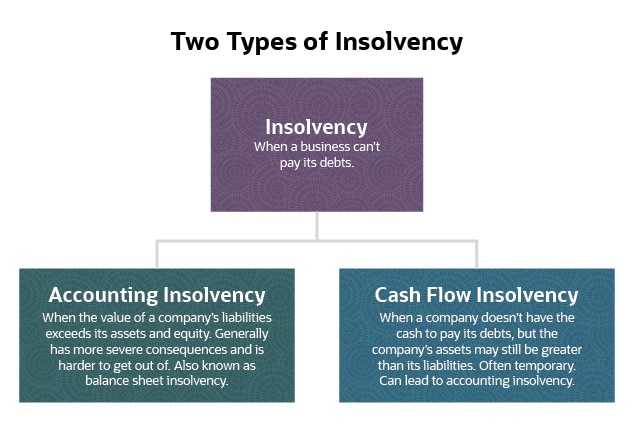Insolvency Practitioner Fundamentals Explained
Insolvency Practitioner Fundamentals Explained
Blog Article
What Does Insolvency Practitioner Mean?
Table of ContentsNot known Details About Insolvency Practitioner The smart Trick of Insolvency Practitioner That Nobody is Talking AboutSee This Report about Insolvency PractitionerThe 2-Minute Rule for Insolvency PractitionerInsolvency Practitioner Can Be Fun For EveryoneNot known Facts About Insolvency PractitionerOur Insolvency Practitioner Ideas
Insurance policy is kept an eye on and managed by state insurance coverage departments, and among their main goals is protecting policyholders from the danger of a company in economic distress. When a firm goes into a duration of economic difficulty and is incapable to meet its responsibilities, the insurance commissioner in the business's home state launches a processdictated by the regulations of the statewhereby efforts are made to help the firm regain its monetary footing.If it is determined that the company can not be fixed up, the business is stated insolvent, and the commissioner will ask the state court to buy the liquidation of the firm. The insurance commissioner, either selected by the guv or chosen, heads the state insurance coverage department and monitors and manages insurance policy task within the state.
By obtaining control of a company, the commissioner (or the insurance coverage department) is, by regulation, the rehabilitator or liquidator of the business. In this capacity, the commissioner or division takes control of the business's operations. Rather than do so straight, the commissioner may preserve a special replacement receiver to oversee the business's tasks.
The Facts About Insolvency Practitioner Uncovered
The receiver oversees an audit of the company's possessions and responsibilities and provides the estate of the business. In doing so, the receiver looks for to make the most of the business's properties, transfer them to money, and after that distribute that cash money to lenders having legitimate insurance claims versus the insurance firm based on payment concerns specified by state law (in all states, insurance holders are top priority claimants whose claims are paid before those of basic financial institutions).
All insurance policy companies (with minimal exceptions) licensed to market life or health and wellness insurance coverage or annuities in a state should be members of that state's warranty organization. The guaranty organization accepts the commissioner and the receiver in pre-liquidation planning. When the liquidation is purchased, the guaranty association offers coverage to the firm's insurance holders that are state citizens (as much as the levels specified by state lawssee listed below; any benefit quantities above the warranty asociation advantage degrees become claims against the business's continuing to be assets).
Not known Factual Statements About Insolvency Practitioner
The above protection degrees apply individually for each financially troubled insurance firm. [Back] When an insurance company fails and there is a shortfall of funds required to satisfy the responsibilities to insurance policy holders, state guaranty organizations are turned on. Guaranty associations have 2 major sources of funding when providing coverage to insurance holders. Guaranty associations have subrogation civil liberties to a proportional share of the possessions remaining in the failed insurance firm.
Second, insurance companies doing company in that state are analyzed a share of the amount called for to meet the visit this site right here section of the guaranty organizations' covered cases not otherwise moneyed with estate possessions. The amount insurance firms are analyzed is based upon the amount of premiums that they gather because state. [Back] The National Company of Life and Health And Wellness Insurance Policy Guaranty Associations (NOLHGA) is composed of the life and health insurance policy guaranty organizations of all 50 states and the District of Columbia.
NOLHGA establishes a job pressure of depictive guaranty associations to deal with the insurance commissioner to create a plan to shield insurance holders. For more details on NOLHGA's duty in the procedure, see "What Is NOLHGA?" and "The Safeguard at Work." [Back]
Getting The Insolvency Practitioner To Work

Predictive protection by helping you choose the right consumers and the right markets to avoid uncollectable bill to begin with, many thanks to intense monetary evaluation. Extensive market knowledge, providing you with 360-degree visibility on company markets and foreshadowing troubles. It would be a simplification to assume a trade credit insurance coverage begins and ends with costs and pay-outs.

Not known Factual Statements About Insolvency Practitioner
Why does a company get in into bankruptcy? There are a number of factors why a firm might get in right into bankruptcy.
Various other reasons for insolvency include fraud, mismanagement, and unanticipated costs. Bankruptcy can likewise lead to work losses and the closure of businesses.
9 Easy Facts About Insolvency Practitioner Described
The firm may be forced to sell possessions, lay off staff or also close down. Financial institutions may be left out of pocket and the company's investors may see their financial investment disappear.
This can occur for a number of reasons, consisting of poor economic monitoring, unanticipated costs, or a change in the marketplace. If a business is insolvent, it might be forced to close down or market off assets to pay creditors. This can have a significant influence on business, workers, and investors.
Why does a firm get in right into bankruptcy? There are a number of factors why a business may enter into bankruptcy.
More About Insolvency Practitioner
Various other reasons my latest blog post for insolvency consist of scams, mismanagement, and unforeseen expenses. Bankruptcy can likewise lead to work losses and the closure of services.
This can have major effects for the business, its stakeholders, creditors and the economic climate. The firm may be required to offer properties, lay off personnel and even shut down. This can have a ripple effect on the local community and the economic climate as a whole. Lenders might be left out of pocket and the company's shareholders may see their investment go away.
Report this page